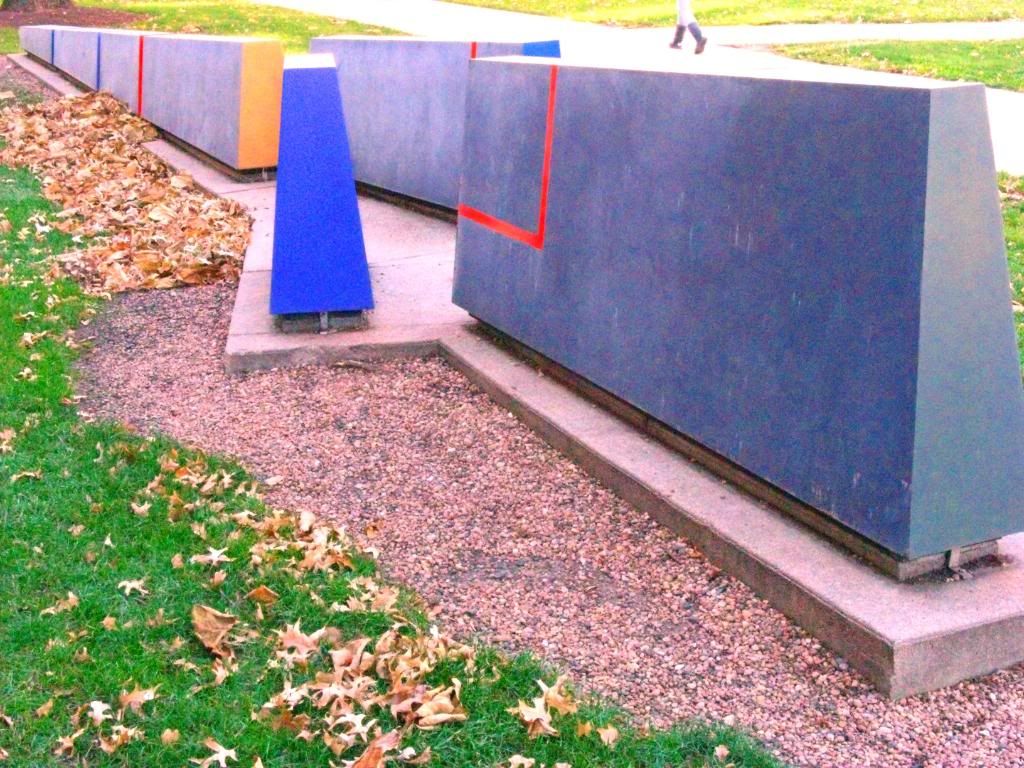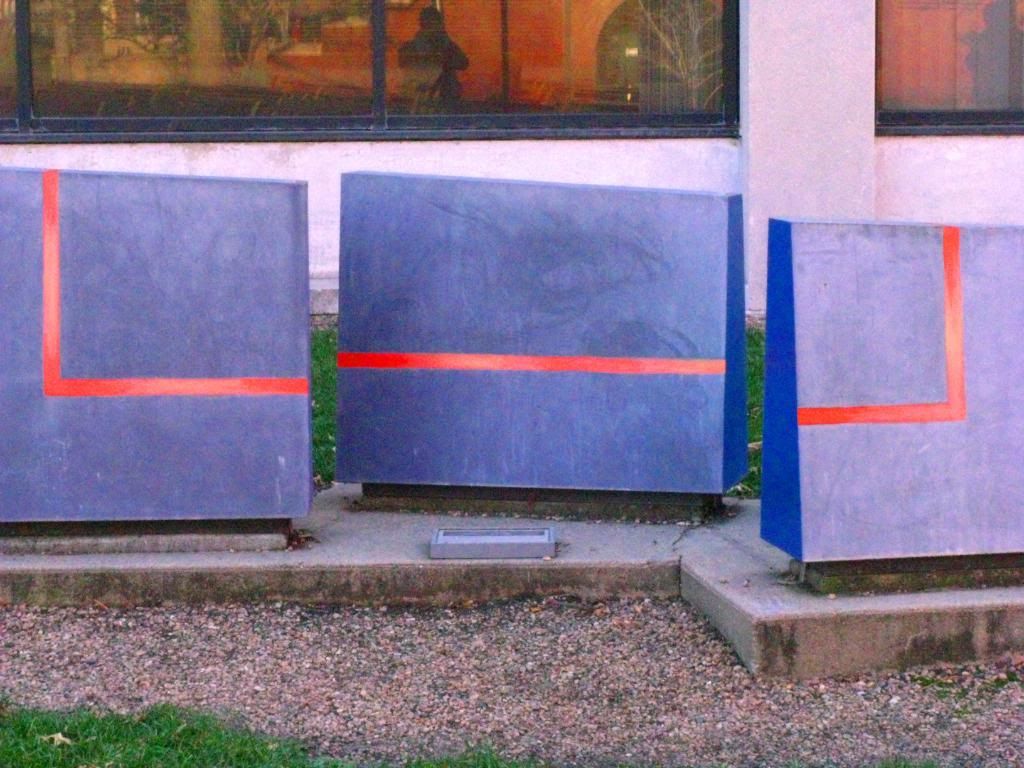 One type of communication is through the creation of art such as a sculpture. This being said, even though the artist may have the desire to convey a particular message during his/her design process, once completed, the work itself manifests its own message and meaning to each individual viewer. Keeping this in mind, the elements of each sculpture that identify with each individual may vary from what the sculptor originally intended. Thus, after spending hundreds of minutes studying the piece Variable Wedge by Sam Richardson on the UNL campus, I have come to a particular realization about what the piece means to me. In doing so, however, it would not be particularly meaningful to discuss what I have learned with Richardson, as he may or may not have designed the piece with the purpose that I believe it has. Instead, I should convey this message, in the form of a letter, to the sculpture itself.
One type of communication is through the creation of art such as a sculpture. This being said, even though the artist may have the desire to convey a particular message during his/her design process, once completed, the work itself manifests its own message and meaning to each individual viewer. Keeping this in mind, the elements of each sculpture that identify with each individual may vary from what the sculptor originally intended. Thus, after spending hundreds of minutes studying the piece Variable Wedge by Sam Richardson on the UNL campus, I have come to a particular realization about what the piece means to me. In doing so, however, it would not be particularly meaningful to discuss what I have learned with Richardson, as he may or may not have designed the piece with the purpose that I believe it has. Instead, I should convey this message, in the form of a letter, to the sculpture itself. As I attempt to convey my message to Variable Wedge, it is important to keep in mind three particular aspects vital to the success of the letter: the audience, the context of the message, as well as my purpose. Perhaps the most unusual part about this endeavor is that it does not involve a typical audience. Although a sculpture is able to communicate with people via its subject matter, form, and syntax, it is not able to respond verbally to a letter. Thus, whereas one might normally write a letter with the purpose to hear back from the primary audience, this letter will not be in that format. Instead, it will be as if I am speaking to someone who is unable to communicate back to me either verbally or with motion. In addition, I must also keep in mind the secondary audience, which consists of my class, teacher, and other people who might walk by as I read the letter aloud. Many of these people most likely have not looked closely at Variable Wedge before, and as such, it is important to take this into consideration when formatting the note.
 Besides audience, it is just as important to consider the context in which the message will be presented. As a sort of theatrical performance designed to convey my message to its primary and secondary audiences, I must write the letter in such a manner as to engage both audiences. This context necessitates the use of colorful adjectives as well as having the mindset of an actor when reading the letter aloud. In addition, the way in which I read the letter will also be crucial, as this iteration mirrors the form and function of the sculpture. The environment in which I read, the outdoors, will also require that I project my voice so it can be heard by all members of the audience.
Besides audience, it is just as important to consider the context in which the message will be presented. As a sort of theatrical performance designed to convey my message to its primary and secondary audiences, I must write the letter in such a manner as to engage both audiences. This context necessitates the use of colorful adjectives as well as having the mindset of an actor when reading the letter aloud. In addition, the way in which I read the letter will also be crucial, as this iteration mirrors the form and function of the sculpture. The environment in which I read, the outdoors, will also require that I project my voice so it can be heard by all members of the audience.
Lastly, as I take the audience and context into consideration, I can finally take into account the two-fold purpose of the letter. First and foremost, it will be to dictate to the steel wedge what I have gained from his form, color, textures, orientation, etc. There are countless aspects of the sculpture to address, and as such, it is important that I condense what I want to say into a concise yet precise letter. The second aspect of this purpose involves engaging with the secondary audience in a way that incorporates them into the situation as well. Hopefully through the letter they will be able to identify with the sculpture as I do.
No comments:
Post a Comment